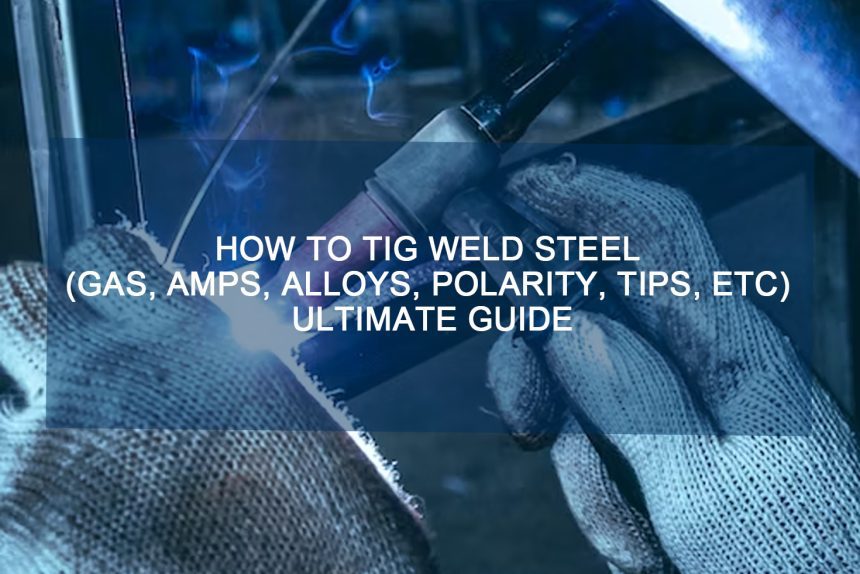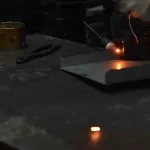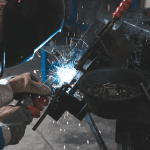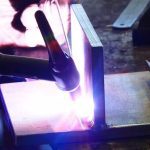TIG welding, also known as Tungsten Inert Gas welding, is a highly valuable method for joining metals, especially steel. This technique involves heating the metals using an arc created between the tungsten electrode and the base metal.
How to TIG Weld Steel
Welding Town
(Gas, Amps, Alloys, Polarity, Tips, etc)
Ultimate Guide
What Polarity Should I Use When I TIG Weld on Steel?
Polarity stands as one of the most crucial factors influencing the quality of welded joints. If the polarity is incorrectly chosen, you may experience inadequate penetration, increased spattering, and loss of control over the welding arc. There are three types of polarity available:
Straight Polarity (DCEN) – This polarity is vital in TIG welding on steel, as selecting the appropriate polarity greatly impacts the weld’s quality and strength.
Direct Current Straight Polarity
This occurs when the electrode is negatively charged, and the plates are positively charged. As a result, electrons flow from the electrode tip to the base plates.
Direct Current Reverse Polarity
This phenomenon occurs when the electrode is positively charged, and the plates are negatively charged. Consequently, the flow of electrons reverses direction, moving from the base plates to the electrode.
Alternating Current Polarity
When the power source provides an AC current, both direct and reverse polarity will alternate in every cycle. During half of a cycle, the electrode will be negative, making the base plates positive. In the other half of the cycle, the base plates will be negative, and the electrode will be positive. The number of cycles that occur within a few seconds depends on the frequency of the power supply.
What Pulse Can I Use on Steel?
Pulse TIG welding finds frequent application in joining thin sections of stainless steel and non-ferrous metals. However, its utility extends beyond these materials, as it is also employed for welding copper alloys, magnesium, and aluminum, among others.
Amperage of TIG Welding on Steel
To initiate TIG welding, specialized machines are designed to deliver a consistent amperage at all times. The machine settings are configured in terms of amperage, which remains relatively constant during the welding process. Any changes in voltage are dependent on the length of the welding arc, as voltage is measured through the arc. When the arc length increases, the voltage also rises, and vice versa when the arc is shortened. The power supply ensures a steady amperage setting. For welding ¼ inch steel in a single pass, approximately 180 amps are required. Alternatively, for thicker materials, a series of thin passes can be employed with less amperage needed per pass. However, multiple passes may result in longer welding times.
When TIG welding on highly thin sheet metal, it may be necessary to switch to direct current electrode positive. This would direct more heat onto the tungsten electrode, preventing the arc from burning through the sheet metal. When using a direct current electrode, welding with a low amperage setting is advised to prevent the tungsten from burning up as well. Additionally, in some cases, the machine may need to be set to direct current electrode to shape the tungsten into a ball end. This process allows the direct current electrode to quickly melt the tungsten, enabling the creation of ball-shaped tungsten ends, commonly used in TIG welding.












